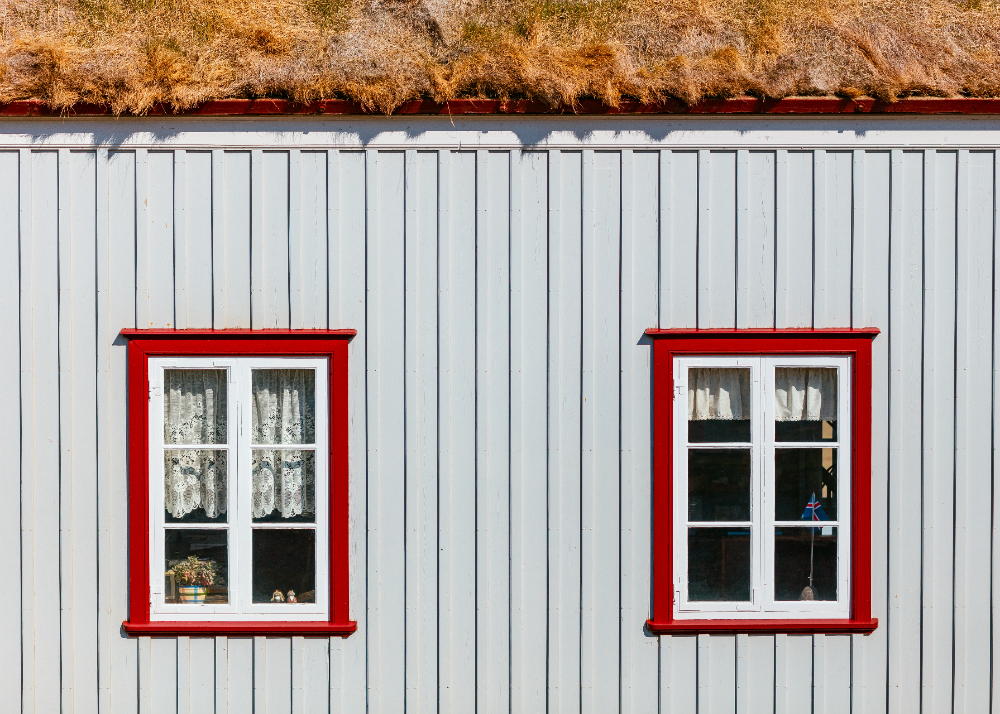One of the most important decisions you will make when constructing your metal barn is choosing the right roof style. It has several important functions beyond simply protecting the barn from the elements. The roof offers structural integrity, affects the overall aesthetic appeal of the barn, and determines how well the barn will perform in specific weather conditions.
In particular, metal barn roofs have become increasingly popular due to their durability, longevity, and ability to withstand harsh environmental conditions.
In this guide, the experts at Lion Barns explore the most common metal barn roof styles, their benefits, and key considerations.
Gable Roof
One of the most traditional and common roof styles for metal barns is the gable roof. This style consists of two sloping sides that meet at the top to form a ridge, creating a triangular shape. Gable roofs are often associated with classic barn designs and are the go-to choice for many builders due to their simplicity and practicality.
The primary advantage of the gable roof is its ability to effectively channel rain, snow, and other precipitation off the roof. This is particularly important in areas that experience heavy snowfall, as the steep angle of the roof allows the snow to slide off more easily, preventing buildup that could damage the structure. Furthermore, the angled design helps with the natural drainage of rainwater, reducing the risk of leaks or standing water.
Gable roofs also offer the benefit of creating additional attic space, which can be valuable for storage or ventilation purposes. The interior of the barn can often accommodate more headroom and room for storage or lofts, making it a versatile design option. The simplicity of the gable roof also lends itself to easy construction and cost-efficiency, which is appealing for both residential and commercial metal barns.
However, in regions that experience high winds, the vertical structure of a gable roof can sometimes be more vulnerable to wind damage. Reinforcements can mitigate this risk, but it’s important to take the local climate into account when opting for a gable roof design.
Monitor Roof
The monitor roof is an innovative and functional design that has become increasingly popular in modern metal barns. This roof style features a raised center portion, or “monitor,” with two sloping sides that are lower in height. The raised section is often fitted with windows or ventilation systems, which allow for better airflow and natural light within the barn.
One of the primary advantages of a monitor roof is its ability to enhance ventilation. The raised center section creates a natural airflow that allows warm air to escape, preventing the buildup of heat and humidity inside the barn. This is particularly beneficial for barns that house livestock, as proper ventilation is crucial for maintaining a healthy environment for animals.
In addition to improving ventilation, the monitor roof allows for an abundance of natural light to filter into the barn. This reduces the need for artificial lighting during the day and can lead to energy savings. Furthermore, the unique design of the monitor roof offers a more spacious interior, making it easier to accommodate large equipment, machinery, or workspaces.
However, monitor roofs tend to be more complex to construct compared to standard gable roofs, and the installation process may require specialized materials and labor. The additional cost of this roof style can be a consideration for those working within a strict budget. Additionally, the raised center section may require more frequent maintenance, particularly when it comes to cleaning windows or ensuring that the ventilation system remains functional.
Shed Roof
The shed roof, also known as a single-slope roof, is a simple design that features one continuous sloping surface. Unlike the gable or monitor roof, a shed roof does not have a peak but instead follows a gentle incline from one side of the building to the other. Shed roofs are commonly used in smaller metal barns or buildings that require a more modern and minimalist appearance.
One of the major advantages of the shed roof is its affordability and ease of construction. Because the design is relatively simple, it often results in lower labor and material costs compared to more complex roof styles. Additionally, the shed roof is ideal for barns in regions where there is minimal snowfall or rain, as it effectively channels water off the roof without the need for steep angles.
Another benefit of the shed roof is its versatility. It can be incorporated into a variety of architectural styles, from contemporary designs to more rustic barn looks. Shed roofs also allow for better integration with surrounding structures, such as garages or workshops, providing a cohesive and modern appearance.
However, the primary drawback of the shed roof is its limited space for storage or ventilation. The lack of a ridge means that the interior height may not be as high as that of a gable or monitor roof. In barns that require significant attic space or enhanced airflow, a shed roof may not be the ideal choice. Additionally, because of its minimal pitch, shed roofs can be more susceptible to water pooling in regions with heavy rainfall, which can lead to leaks or water damage over time.
Hip Roof
A hip roof is a more complex style that features slopes on all four sides of the barn, which meet at a central ridge. Unlike the gable roof, where two sides slope down, a hip roof provides a more symmetrical appearance, with all sides of the roof having a similar incline. This style is often seen as more stable and durable due to the equal distribution of weight on all sides.
One of the key benefits of a hip roof is its wind resistance. The four slopes of the roof provide more surface area for the wind to flow over, reducing the likelihood of wind damage. This makes the hip roof a great choice for areas that experience high winds or severe storms, as the roof can withstand the pressure better than traditional designs.
In addition to offering enhanced stability, hip roofs have a more aesthetically pleasing appearance, with a smooth, uniform design. This style is often chosen for high-end barns or commercial buildings where the visual appeal is an important consideration.
However, hip roofs tend to be more expensive to construct due to the complexity of the design. The construction process requires more materials and labor compared to simpler roof styles, which can increase the overall cost of the barn. Furthermore, while the roof’s symmetrical design provides excellent wind resistance, it may not be as efficient at shedding snow or rain as gable or monitor roofs, which have steeper angles.
Flat Roof
A flat roof is a modern design characterized by its minimal slope. While it may seem counterintuitive for a barn, flat roofs are increasingly being used for metal barns that prioritize efficiency, cost-effectiveness, and modern aesthetics. The lack of a significant pitch means that the roof is almost level, with a slight incline for drainage.
The most significant advantage of a flat roof is the ease of construction. Flat roofs are simpler to design and build, making them more affordable than other more complex roof styles. Additionally, flat roofs are ideal for creating rooftop spaces, such as storage areas, solar panel installations, or even gardens, which can increase the functionality of the barn.
However, the main drawback of a flat roof is that it is more prone to water pooling. Without the steep pitch of other roof styles, water can accumulate on the surface, leading to leaks and potential damage over time. Flat roofs require careful planning of drainage systems, including gutters and downspouts, to ensure that water is properly channeled away from the structure. Regular maintenance is crucial to avoid water-related issues.
Custom Roof Designs
For those looking to create a truly unique barn, custom roof designs provide an opportunity to combine different styles and features. A custom roof can incorporate elements of gable, monitor, shed, or hip roofs, tailored to the specific needs and aesthetic preferences of the owner. This allows for greater flexibility in addressing particular challenges, such as climate conditions, storage needs, or design preferences.
The advantage of a custom roof design is its ability to meet specific requirements that may not be addressed by standard roof styles. For example, custom roofs can be designed to optimize natural light, enhance ventilation, or provide additional storage space. This level of customization allows barn owners to create a space that is highly functional and visually appealing.
However, custom roof designs often come with a higher price tag due to the complexity of the planning and construction process. The additional materials and labor involved in designing a custom roof can significantly increase the overall cost of the barn. Additionally, custom designs require a longer timeline to complete, as they involve detailed planning and coordination with architects, contractors, and manufacturers.
Conclusion
Getting the right roof style correctly is a critical decision for any barn owner. It affects the aesthetics and functionality of the barn.
There is the classic gable roof, or more modern designs like the shed or flat roof. Each one provides a unique advantage and considerations. So whether you prioritize durability, energy efficiency, or aesthetic appeal, there is a metal barn roof style that meets your needs.

